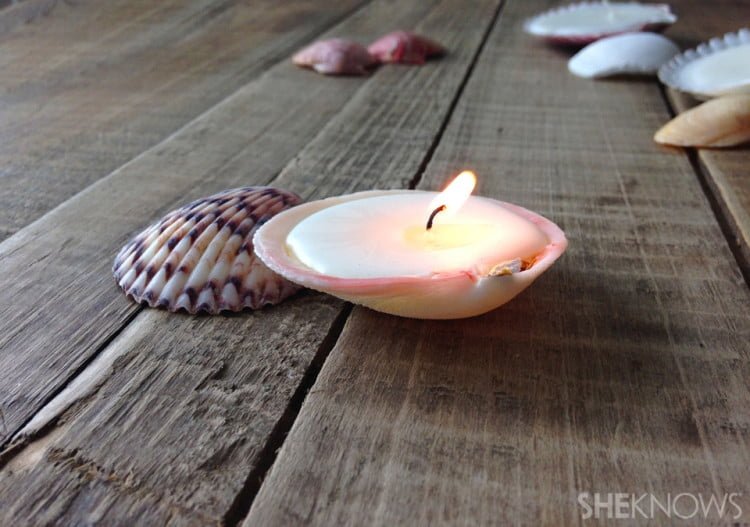Candle making has become a popular venture for individuals looking to turn their creativity and passion into a profitable business. This article aims to explore the profitability of the candle making business, providing insights into the rising popularity of homemade candles, the economics behind starting this type of venture, different revenue streams, pricing strategies, challenges faced by candle makers, marketing and branding techniques, as well as success stories from entrepreneurs who have found success in the industry.
In recent years, there has been a significant increase in consumer preference for handmade and personalized items. This trend extends to candles as well, with customers seeking unique and high-quality products that cannot be found on store shelves. This growing interest in homemade candles presents a golden opportunity for aspiring entrepreneurs to tap into a lucrative market and generate income through their craftsmanship.
Before delving into the details of running a profitable candle making business, it is crucial to understand the economics involved in starting such a venture. One must consider not only the start-up costs but also ongoing expenses such as raw materials, equipment, packaging, and marketing. Careful analysis of these factors is necessary to determine whether a candle making business can be financially sustainable.
The next sections of this article will delve deeper into understanding the rising popularity of homemade candles, exploring different revenue streams available to candle makers, discussing pricing strategies and profit margins considerations. Furthermore, challenges faced within the industry will be presented along with tips on overcoming them. Marketing and branding techniques will also be explored as essential components for achieving success in this field.
The Rising Popularity of Homemade Candles
In recent years, there has been a significant rise in the popularity of homemade candles. Consumers are showing a growing interest in personalized and unique items, including candles, which has created a promising market for candle makers. The appeal of handmade candles lies in their ability to offer something different from commercially manufactured candles.
One major factor contributing to the increased demand for homemade candles is the desire for authenticity and individuality. Consumers are seeking products that reflect their personal style and values, and homemade candles provide just that. These candles often come in a variety of scents, colors, and designs, allowing customers to customize their purchases to suit their preferences. Furthermore, by supporting small-scale candle makers instead of large corporations, consumers feel a sense of connection and authenticity.
The market demand for unique, high-quality candles extends beyond individual consumers. Businesses such as spas, hotels, event planners, and gift shops also appreciate the charm and personal touch that homemade candles bring to their establishments. These businesses often prioritize quality and can act as long-term clients for candle makers who consistently deliver exceptional products.
With the rising popularity of homemade candles among both individual consumers and businesses, there is ample opportunity for candle makers to turn their passion into a profitable business venture. By understanding the market demand for personalized and high-quality candles, entrepreneurs can tap into various revenue streams to maximize their income potential. Whether through online sales platforms like Etsy or local markets and events, there are numerous avenues available for candle makers to showcase their creations and reach potential customers.
To take advantage of these opportunities effectively, candle makers should consider collaborating with local shops or gift stores that align with their brand aesthetics or target audience. By building partnerships with these establishments, it becomes easier to gain visibility in the community while providing these stores with exclusive product offerings they can’t find elsewhere.
The Economics of Candle Making
Candle making businesses require careful consideration of the economics involved in order to ensure profitability. This section will analyze the start-up costs, expenses, and potential revenue streams of a candle making business.
When starting a candle making business, there are several initial costs to consider. These include the purchase of raw materials such as wax, fragrance oils, wicks, and dyes. Additionally, equipment such as melting pots, thermometer, scales, and molds may need to be purchased or rented.
Packaging materials like jars or containers for the finished candles should also be factored into the startup costs. It is important to conduct thorough market research to determine the demand for specific types of candles in order to make informed decisions about which materials and equipment to invest in.
In addition to start-up costs, ongoing expenses also play a significant role in the economics of a candle making business. These expenses include regular purchases of raw materials and packaging supplies, as well as overhead costs such as utilities and workspace rent (if applicable). Marketing expenses should also be considered, including online advertising or attending local markets for increased visibility.
| Expense Category | Examples |
|---|---|
| Raw Materials | wax, fragrance oils, wicks |
| Equipment | melting pots, thermometer |
| Packaging | jars, containers |
| Overhead Costs | utilities, workspace rent |
| Marketing | advertising, market fees |
Analyzing the economics of candle making allows business owners to establish fair pricing and profit margins. It is important to consider the total cost of production, including raw materials and labor hours, when determining the price for handmade candles. Additionally, market research can help identify competitors’ pricing strategies and ensure that the business remains competitive.
Overall, understanding the economics of a candle making business is crucial for ensuring profitability. By carefully considering start-up costs, ongoing expenses, and pricing strategies, entrepreneurs can make informed decisions that contribute to the success of their venture.
Different Revenue Streams in Candle Making Business
Online Sales
One of the most accessible and profitable revenue streams for a candle making business is through online sales. With the increasing popularity of e-commerce platforms and social media, selling handmade candles online has become easier than ever before.
Setting up an online store or utilizing existing platforms like Etsy or Amazon Handmade allows candle makers to reach a larger customer base beyond their local area. It also provides the opportunity to showcase their products to customers worldwide, expanding the potential for sales.
To generate consistent online revenue, candle makers can employ various strategies. Building a visually appealing website with high-quality product images and detailed descriptions is crucial in capturing the attention of potential buyers.
It is equally important to maintain active engagement on social media platforms by posting creative content related to candle making, sharing behind-the-scenes footage, and offering promotions or discounts exclusively for online followers. Additionally, investing in search engine optimization (SEO) techniques can help increase the visibility of the online store and attract organic traffic.
Local Markets
Participating in local markets, craft fairs, and pop-up shops can be another profitable avenue for a candle making business. These events often attract a large number of consumers looking for unique handcrafted products.
Setting up an attractive booth with eye-catching displays and offering samples or demonstrations can help draw people in and convert them into customers. To maximize revenue at these events, it is essential for candle makers to have a diverse product range that caters to different preferences and budgets.
Networking with other artisans participating in these events can also lead to further exposure and collaborative opportunities. For instance, collaborating with a local soap maker or bath bomb creator can create complementary products that customers are more likely to purchase together. Establishing relationships with event organizers may also provide recurring opportunities for future sales.
Wholesale Opportunities
Another revenue stream that candle makers can explore is wholesaling their products. Selling candles wholesale to local shops, gift stores, or event planners can lead to bulk orders and recurring revenue. It is essential to research and target potential wholesale clients, taking into consideration their target market and product preferences.
To be successful in the wholesale market, candle makers should ensure that their products are competitively priced without compromising on quality. This may require finding cost-effective ways to produce candles in larger quantities, such as streamlining production processes or negotiating better raw material prices from suppliers. Building strong relationships with wholesalers based on trust and consistent delivery of high-quality products can result in long-term partnerships that benefit both parties.
By exploring different revenue streams such as online sales, local markets, and wholesale opportunities, candle makers can diversify their income sources and increase the profitability of their business. Each of these avenues presents unique advantages and challenges, but with careful planning and strategizing, candle makers can find success in multiple channels while sharing their passion for handmade candles with a broader audience.
Pricing and Profit Margins
Determining the right pricing for handmade candles is essential for the profitability of a candle making business. It requires careful consideration of various factors to ensure that costs are covered, and profit margins are achieved. Here are some insights on how candle makers can calculate their pricing effectively.
Firstly, it is important to consider the cost of materials. Candle makers need to factor in the expenses of wax, wicks, fragrance oils, dyes, and any additional decorative elements or packaging materials used. Keeping track of these costs and ensuring they are incorporated into the final price will help avoid selling candles at a loss.
In addition to material costs, labor hours should also be accounted for when calculating pricing. Candle making involves several steps such as melting wax, pouring into molds, adding fragrance or color, and packaging. Each of these activities requires time and effort from the candle maker. Therefore, it is crucial to estimate how many hours it takes to produce each type of candle and assign an appropriate value to the labor involved.
Moreover, overhead costs should be considered. These include expenses such as equipment maintenance, utilities, workspace rental (if applicable), and marketing efforts. Allocating a portion of these costs per unit helps ensure that all expenses associated with running the business are covered in the final price.
To determine profit margins, candle makers can consider setting a fixed percentage markup on top of their total production cost. This allows them to earn a profit while also accounting for unforeseen expenses or fluctuations in market demand.
It’s also important to research competitors’ prices within your target market segment. By analyzing what others charge for similar products, you can gauge if your pricing strategy aligns with market standards. However, keep in mind that undercutting significantly may harm brand perception while overpricing might deter potential customers.
By considering all these factors – material costs, labor hours, overhead expenses, competitor analysis – candle makers can arrive at a pricing strategy that not only covers their costs but also ensures a sufficient profit margin for the sustainability and profitability of their candle making business.
Overcoming Challenges in a Candle Making Business
Candle making can be a profitable business venture, but like any other industry, it comes with its fair share of challenges. In this section, we will discuss some common obstacles faced by candle makers and provide strategies to overcome them, ensuring business profitability.
One of the main challenges in a candle making business is the high level of competition. With the increasing popularity of homemade candles, there are now numerous sellers in the market. To stand out from the competition, it is crucial to offer unique and high-quality products.
Experimenting with different scents, colors, and designs can help you create candles that appeal to a specific niche or target audience. Additionally, staying up-to-date with the latest trends in candle making can give you an edge over your competitors.
Another challenge faced by candle makers is maintaining consistent quality. Customers have come to expect excellence when purchasing handmade candles, so it is important to ensure that each product meets high standards. This includes using top-quality raw materials, following precise measurements and procedures, and paying attention to details such as wick placement and fragrance distribution. Implementing a strict quality control process will help you deliver consistent quality and build a loyal customer base.
Keeping up with evolving trends in the candle making industry can also pose a challenge for entrepreneurs. Consumer preferences and demands change over time, so it is essential for candle makers to stay informed about new techniques, ingredients, and styles. Attending trade shows or workshops dedicated to candle making can provide valuable insights into industry trends and help you stay competitive.
Overcoming these challenges requires dedication, creativity, and continual improvement. By establishing your unique selling proposition (USP), maintaining consistent quality standards, and keeping up with industry trends, you can successfully navigate the obstacles in a candle making business and achieve long-term profitability.
| Challenges | Strategies |
|---|---|
| High competition | Create unique products, stay up-to-date with trends |
| Consistent quality | Implement strict quality control, use top-quality materials |
| Keeping up with trends | Attend trade shows, workshops for insights |
Marketing and Branding for Candle Makers
Effective marketing and branding are crucial components of building a successful candle making business. In today’s competitive market, it is not enough to simply make high-quality candles; you also need to create a strong brand image and actively promote your products to reach your target audience. Here are some strategies to consider when it comes to marketing and branding for candle makers:
- Define Your Target Market: Before diving into marketing your candles, it is important to identify who your ideal customers are. Do some market research to understand their preferences, demographics, and shopping habits. This will help you tailor your marketing efforts specifically to appeal to them.
- Create an Engaging Online Presence: In today’s digital age, having a strong online presence is essential for any business. Start by creating a visually appealing website that showcases your candles and tells the story behind your brand.
Implement search engine optimization (SEO) techniques so that potential customers can easily find you online. Additionally, embrace social media platforms like Facebook, Instagram, and Pinterest to connect with your target audience and share visually appealing images of your candles. - Collaborate with Influencers: Partnering with influencers or bloggers in the lifestyle, home decor, or self-care niches can be an effective way to expand your reach and gain credibility. When selecting influencers, choose those whose values align with your brand’s image and who have a genuine interest in candles or related topics.
- Participate in Local Events and Markets: Participating in local events such as craft fairs or farmer’s markets provides an opportunity for direct interaction with potential customers. Set up an attractive booth display that showcases your unique candles and engage in conversations with attendees about your products.
- Use Packaging as Branding: Packaging plays a crucial role in branding for candle makers. Design packaging that reflects the style and personality of your brand while being visually appealing on store shelves or when being delivered to customers’ homes. Consider adding personalized touches like custom labels or handwritten notes to create a memorable experience for your customers.
- Engage with Your Audience: Building a loyal customer base requires ongoing engagement. Respond promptly to inquiries and comments on your social media platforms, blog, or website. Consider running giveaways or exclusive promotions for your followers to encourage interaction and foster a sense of community.
By implementing effective marketing and branding strategies, you can differentiate yourself from competitors and maximize the profitability of your candle making business. Remember that consistency and authenticity are key when building a strong brand image and connecting with your target audience.
Success Stories and Case Studies
Case Study 1: The Story of Sarah’s Candles
Sarah Thompson, a former accountant turned candle maker, started her own candle making business called Sarah’s Candles five years ago. At the beginning, she faced many challenges, such as finding the right suppliers for high-quality materials and reaching her target audience. However, with dedication and hard work, Sarah was able to overcome these hurdles and build a profitable business.
One of the keys to Sarah’s success was her ability to create unique and high-quality candles that appealed to her customers. She experimented with different scents, shapes, and colors to produce truly one-of-a-kind pieces. By offering personalized options and custom orders, she quickly gained a loyal customer base.
In terms of marketing and branding, Sarah utilized social media platforms like Instagram and Facebook to showcase her products. She also collaborated with local gift shops and boutiques to expand her reach. Through these efforts, Sarah’s Candles became widely recognized as a brand that offers premium handcrafted candles made with love.
Sarah’s journey is a testament to the profitability of a candle making business when approached strategically. It requires creativity, attention to detail, relentless marketing efforts, and consistent quality control. With the right approach and mindset, aspiring candle makers can turn their passion into a successful venture.
Case Study 2: From Hobbyist to Successful Entrepreneur
Jennifer Simmons had always loved making candles as a hobby but never considered turning it into a business until she received positive feedback from friends and family who received them as gifts. Encouraged by their enthusiasm, Jennifer decided to take the leap and start selling her handmade candles.
She began by setting up an online store on platforms like Etsy and Shopify. Jennifer also participated in local craft fairs where she could showcase her products directly to potential customers. Gradually, word spread about Jennifer’s unique designs and high-quality candles.
Through continuous learning and adaptation, Jennifer refined her candle making techniques and expanded her product line. She introduced seasonal collections, limited editions, and themed candles for special occasions. By diversifying her offerings, she was able to attract a wider customer base and generate more sales.
Jennifer’s candle making business flourished so much that she was eventually approached by several local shops and boutiques who wanted to carry her candles in their stores. This opened up additional revenue streams for Jennifer as she began selling her candles wholesale.
Jennifer’s story demonstrates that with passion, perseverance, and adaptability, a candle making hobby can evolve into a profitable business. By leveraging the power of online platforms as well as local partnerships, individuals like Jennifer can grow their brand and achieve entrepreneurial success in the candle making industry.
Conclusion
In conclusion, the profitability of a candle making business depends on various factors. The rising popularity of homemade candles and the trend of consumers seeking unique and personalized items present a growing market demand for high-quality candles. However, starting a candle making business does involve certain start-up costs, including raw materials, equipment, packaging, and marketing expenses.
To generate revenue in this business, candle makers can explore different avenues such as online sales, participation in local markets, or even wholesale opportunities. Collaborations with local shops, gift stores, or event planners can also provide additional income streams. Pricing handmade candles correctly is crucial to ensure profitability, considering factors such as material costs and labor hours.
While there are challenges that candle makers may face in terms of competition and keeping up with trends, overcoming these obstacles is possible by implementing effective strategies and staying true to consistent quality standards. Effective marketing and branding play a significant role in establishing a recognizable brand image for candle makers.
Overall, while the profitability of a candle making business cannot be guaranteed for every individual case, success stories from entrepreneurs who have turned their passion for candle making into profitable ventures do exist. By considering the discussed factors and drawing inspiration from these success stories and case studies, individuals interested in starting a candle making business can make informed decisions about its potential profitability.
Frequently Asked Questions
Is it worth starting a candle business?
Starting a candle business can be a worthwhile venture for those who have a passion for candles and are willing to put in the effort to make it successful. There is a growing demand for unique, handcrafted candles, and with effective marketing and branding, there is potential to carve out a niche in the market.
However, like any business, it requires careful planning, research, and investment in terms of time, money, and resources. It’s important to consider factors such as competition, target market, product differentiation, and profitability before deciding if starting a candle business is worth it.
Can you make good money making candles?
While it is possible to make good money making candles, success depends on various factors such as the quality of your products, pricing strategy, marketing efforts, and overall business management skills. In the candle industry, margins can vary depending on the type of candles produced (e.g., luxury or specialty candles tend to have higher profit margins), production costs including raw materials and supplies required for candle-making processes need to be accounted for.
Additionally, effective sales channels like online platforms and retail partnerships can increase revenue potential. Like any entrepreneurial endeavor, building a customer base and establishing brand loyalty takes time and consistent effort.
How much do candle business owners make?
The earnings of candle business owners can fluctuate significantly based on various factors such as the size of their business operations, market demand for their products or services, pricing strategy employed by them among other things . For smaller-scale businesses or home-based ventures specializing in local markets or online sales platforms where operational costs may be lower compared to larger enterprises with physical stores or multiple distribution channels , annual earnings can range from several thousand dollars up into six figures depending upon how well each owner understands their target audience , manages expenses & implements an efficient growth plan that corresponds well with consumer preferences & trends within their chosen niche .
However,it is important bear in mind that this is just an estimate as there are no fixed earnings figure that applies uniformly across all candle business owners.

Welcome to my candle making blog! In this blog, I will be sharing my tips and tricks for making candles. I will also be sharing some of my favorite recipes.





